NYC becomes archaeological site covering centuries
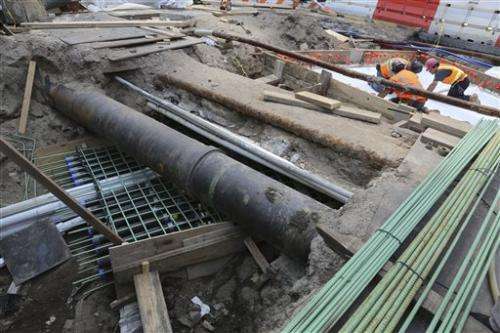
The city has become an archaeological site, with thousands of artifacts such as an 18th-century bone toothbrush with animal hair bristles and wine and champagne bottles corked centuries ago unearthed to prove it.
A copper half-penny and a pair of children's shoes are some of the other remnants of early New York life workers discovered in lower Manhattan while digging to install new utilities for the growing residential and business South Street Seaport area.
Last week, under a 15-foot (4.6-meter) stretch of Fulton Street, near Wall Street, more than 100 liquor bottles from the 18th century popped up, some still intact and corked, as first reported by the news website DNAinfo.com.
Archaeologist Alyssa Loorya, whose Brooklyn firm is overseeing the financial district excavation, said, "You never know what you'll find right underneath your feet in this city."
"Finding the bits and pieces that were actually used by the people in the past makes New York City's history real," Loorya said Wednesday. "George Washington lived right near here."
The ordinary objects paint an extraordinary picture of the city in the 1700s and 1800s—a community of Dutch and English settlers who hadn't yet spread north into what is today's Manhattan. The budding metropolis and its water-borne trade was still expanding into the East River and harbor with landfills for wharves using whatever was available, including some newly found artifacts that had become garbage.
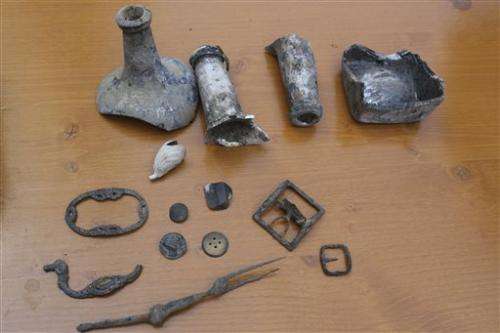
On a summer afternoon, Loorya stood on Fulton Street looking over a table of dirt-caked treasures, surrounded by towering office buildings, luxury residential skyscrapers and refurbished old merchants' houses and stores. The buildings rise above the pit dug into the cobblestone pavement for the crisscrossing electrical wires and water pipes now filling the space where the treasure trove was found near the edge of the city's original shoreline.
Last October, at the peak of Superstorm Sandy, flood waters again surged up to that spot.
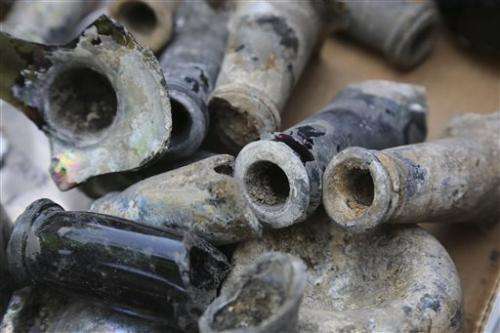
The most recent archaeological pay dirt was hundreds of bottle pieces, including those found last week, from pubs and taverns that had been watering holes for soldiers and sailors passing through.
Some of the bottles were never opened, though they're broken. They've been taken to the laboratories of Loorya's firm, Chrysalis Archaeology, to be washed and examined for details such as one seal marked with the year 1764.
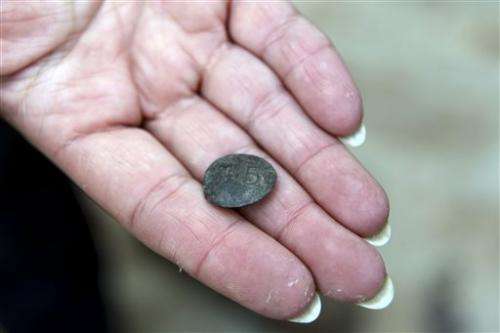
Chrysalis oversees the Department of Design and Construction's excavation of the area while the new utilities are being installed, replacing Civil War-era pipes.
Last year, workers uncovered a 6-foot-long Revolutionary Era wall, likely from a building belonging to one of the powerful families that owned property and kept slaves. Also unearthed were 18th-century shoe buckles, pieces of pottery and a medicine bottle.
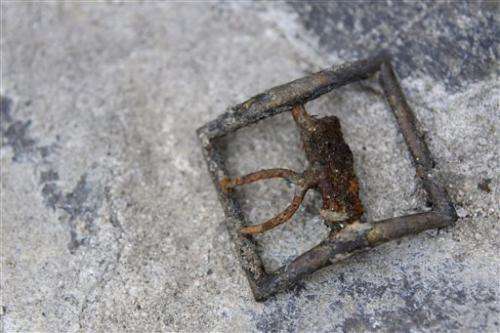
Loorya handled a Revolutionary War button worn by a soldier in a British regiment that fought in the 1776 Battle of Brooklyn, where colonizing forces defeated Washington's ragtag army.
The dig is part of a four-year, $40 million redevelopment project to be finished by December, said civil engineer Thomas Foley, the department's assistant commissioner in charge of the project. About $200,000 is being spent on the archaeological work, he said.
© 2013 The Associated Press. All rights reserved.





















